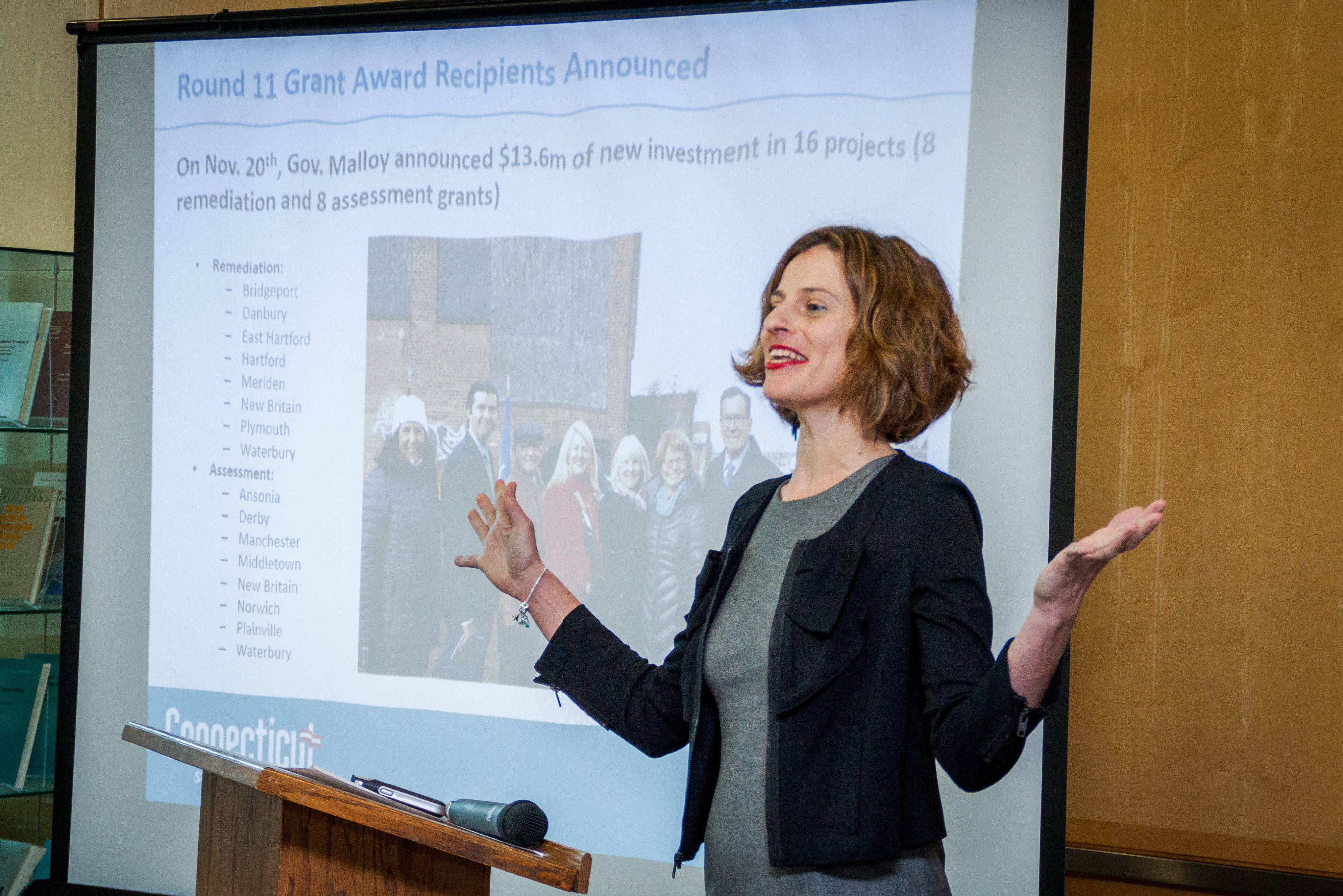Connecticut’s municipalities are dotted by hundreds of brownfield sites with remnants of toxic chemicals and industrial waste from years of unregulated activity. Federal and state assistance is available for cleanup, but the expertise and resources for the intensive process to secure those funds are not.
UConn’s new Connecticut Brownfields Initiative aims to bring much-needed assistance to the redevelopment of these sites.
“Different municipalities have different levels of readiness and resources,” says Maria Chrysochoou, associate professor of civil and environmental engineering and director of the new initiative. “Cities like Stamford and Bridgeport have built up the staff and expertise to successfully go through the process. But smaller towns sometimes don’t have the resources to put together winning proposals, which impedes their economic development opportunities.”
When you think about where this initiative can help, the answer is everywhere, in all 169 of our towns and cities in the state. — Tim Sullivan, CT DECD
In order to develop a workforce and provide assistance to Connecticut towns and cities, the Connecticut Brownfields Initiative will develop a top-notch program for education on brownfields remediation and redevelopment, and provide networking opportunities for students, municipalities, and industry partners.
Beginning in the Fall 2018 semester, students will be able to enroll in a class that will teach them grant proposal writing, regulatory and liability issues, site investigation and remediation, and many other topics surrounding brownfields.
In the Spring 2019 semester, those students will then work with municipalities on real-life brownfield projects chosen through a process that seeks proposals for cleanup. The second half of the course will give the students exposure to every part of the remediation and redevelopment process, and provide towns with a resource to advance the process for their brownfield sites.
“When you think about where this initiative can help, the answer is everywhere, in all 169 of our towns and cities in the state,” says Tim Sullivan, deputy commissioner of Connecticut’s Department of Economic and Community Development. “There is often a high concentration in large cities, but there are also brownfields in small towns spread across the state.
The state has awarded $225 million in brownfields support under Governor Dannel Malloy, according to Sullivan. But “the smaller the town, the bigger the relative challenge of figuring these sites out,” Sullivan adds, “because they don’t have 15 people that can help on this, they often have just one or two.”
To fully fund this endeavor, Connecticut Brownfields Initiative is partnering with the Department of Economic and Community Development, Mohegan Sun, Fuss & O’Neill, GZA Geoenvironmental, TRC Solutions, AECOM, Loureiro Engineering Associates, Manafort Brothers Inc., Langan Engineering & Environmental Services Inc., Shipman & Goodwin, and Tilcon, who will also provide important expertise and networking support to the program.
The dean of the UConn School of Engineering, Kazem Kazerounian, says the Connecticut Brownfields Initiative checks off three of the most important factors when determining success in the School of Engineering: student success, economic impact on the state, and the generation of knowledge.
“I’m really proud and happy that this particular initiative touches on all three of those points,” he says.
With funding and support in place, Chrysochoou will now work on finalizing the curriculum, recruiting the first group of 20 students – the “Brownfield Corps,” invite guest speakers, advertise the program to municipalities, and recruit members for a CBI advisory board.
She is excited to create a center that will not only bring benefits for Connecticut and its municipalities, but also unite several departments across the University.
“Because of the complexity of these projects, several areas of expertise have to be involved, including law, business and marketing, engineering and science, and more,” she says, “and luckily, we have a great knowledge base to draw from here at UConn.”



